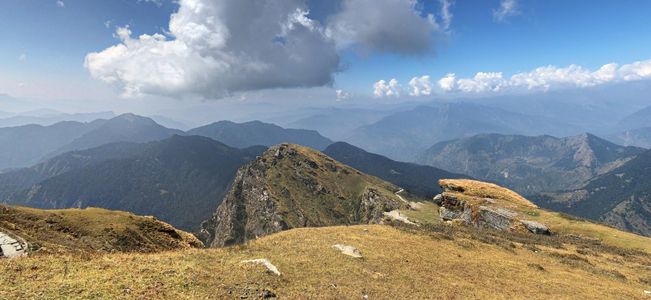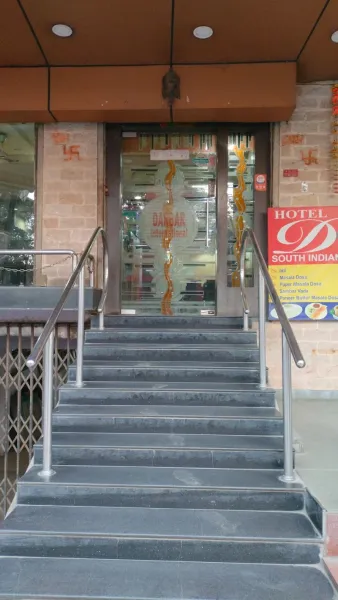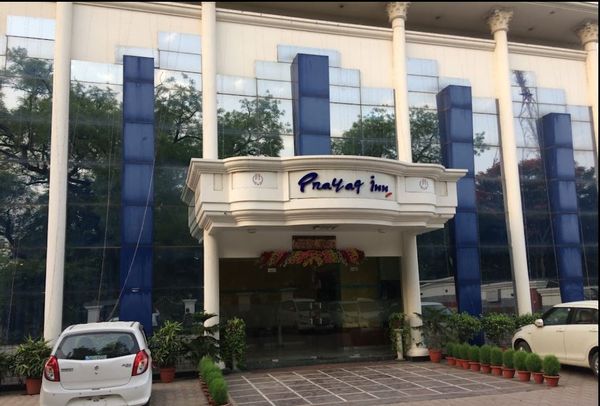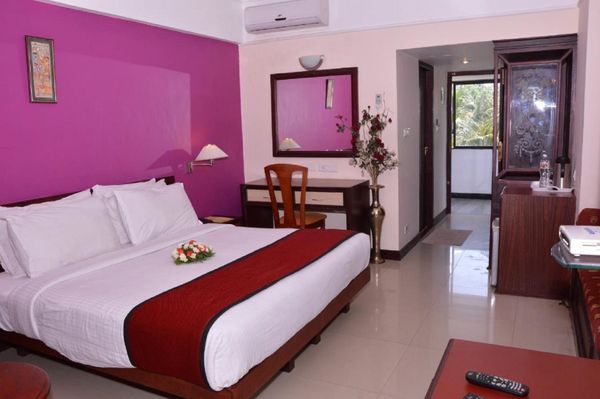Best Time to Visit Chopta Tungnath Trek
 Ankit Rawat
17 Jul, 2025
12 mins read
55
Ankit Rawat
17 Jul, 2025
12 mins read
55

A Complete Guide for Trekking and Weather Planning
The Chopta Tungnath trek is one of the most peaceful and scenic trails in Uttarakhand. It takes you through thick forests, open meadows, and beautiful views of the Himalayan peaks. At the end of the trail lies the Tungnath temple, the highest Shiva temple in the world. This short trek is perfect for beginners, families, and those looking for a quiet break in nature.
Knowing the best time to visit this trek is important for a safe and enjoyable experience. The weather, trail condition, and views can vary with each season. This article gives you a complete guide on when to plan your trip, what to expect in different months, and how to prepare for it.
Overview of the Chopta Tungnath Trek
The Chopta Tungnath trek begins from a small village named Chopta, located in the Rudraprayag district of Uttarakhand. From Chopta, the trekking distance to Tungnath temple is about 3.5 kilometers, and if you want to go further to Chandrashila peak, it adds another 1.5 kilometers.
The trail passes through alpine forests filled with oak and rhododendron trees. Along the way, you get clear views of snow-covered peaks such as Nanda Devi, Trishul, and Chaukhamba. The temple is situated at a height of 3,680 meters, while Chandrashila reaches up to 4,000 meters.
Best Time to Visit Chopta Tungnath Trek
The best time to visit the Chopta Tungnath trek depends on what kind of experience you are looking for. Some people prefer snow, others like green meadows and clear skies. Let’s look at each season in detail.
Spring Season (March to April)
Spring is one of the best times to visit the Chopta Tungnath trek. After the winter snow begins to melt, the trail starts to open up in late March. The weather is cool and fresh, with temperatures ranging between 5 to 15 degrees Celsius.
This is the time when rhododendron flowers bloom along the trail, adding beautiful pink and red colors to the forest. The skies are usually clear, offering wide views of the Himalayas. The temple also starts to become accessible as the snow clears.
Why spring is a good time
- Fresh greenery and blooming flowers
- Clear mountain views
- Pleasant trekking conditions
Summer Season (May to June)
Summer is another excellent time for the Chopta Tungnath trek. The temperature ranges from 8 to 20 degrees Celsius, which makes it comfortable for walking. The days are long and sunny, and the trail is fully open all the way to Chandrashila.
This is a great time for those who want to enjoy warm weather, green landscapes, and the full trek experience. However, this season also sees more visitors, so expect a bit more crowd, especially on weekends.
Why summer is a good time
- Ideal weather for trekking
- Fully accessible trail
- Great for sunrise and sunset views from Chandrashila
Monsoon Season (July to September)
The monsoon brings heavy rain to the region, especially in July and August. The trails can become slippery, and there is a risk of landslides in nearby areas. Although the forest looks very green and fresh, trekking during this time needs caution.
If you still wish to go during the monsoon, plan your trip in early September, when the rain starts to reduce. The crowd is also less during this time, and the valley looks lush and beautiful.
Things to remember in monsoon
- Carry rain gear and proper shoes
- Avoid trekking during heavy rain days
- Stay updated with weather reports
Autumn Season (Mid September to November)
Autumn is one of the best seasons for trekking to Tungnath and Chandrashila. The skies are crystal clear, and the views of the Himalayas are at their best. The temperature during this time ranges between 5 to 15 degrees Celsius, and the trail is dry and safe.
This season is ideal for photography, peaceful travel, and full mountain visibility. The trees start changing colors, and the trail becomes very scenic. If you want a clean and calm trekking experience, autumn is perfect.
Why autumn is a good time
- Best time for mountain views
- Dry and stable weather
- Less chance of sudden rain or snow
Winter Season (December to February)
Winter offers a completely different view of Chopta and Tungnath. The area receives heavy snowfall, especially in January and February. The roads leading to Chopta may be blocked at times, and the trek becomes much more difficult.
Tungnath temple is usually closed in winter, and the trail is covered in snow. However, this time attracts snow lovers and adventure seekers. If you are comfortable trekking in snow and cold temperatures, this season can be magical.
Things to consider in winter
- Only for experienced trekkers
- You may need snow gear and warm clothing
- Check weather and road conditions before planning
Best Month to Visit Based on Your Interest
Here’s a quick guide based on what kind of experience you are looking for
Interest Best Time
Clear mountain views September to November
Rhododendron flowers March to April
Pleasant weather May to June
Fewer crowds Mid September or early March
Snow trekking December to February (with caution)
Tips for Planning Your Visit
- Start early in the morning to avoid clouds at the top and get good lighting for photos.
- Carry layers of clothing as the weather changes quickly, especially near the summit.
- Book accommodation in advance if you are visiting during peak season like May or October.
- Avoid plastic and carry your waste back down to help keep the trail clean.
- Check temple opening dates, as Tungnath is closed in winter months.
Final Thoughts
The Chopta Tungnath trek can be visited throughout the year, but the best experience depends on what you want to see. If you are a beginner and want clear views with pleasant weather, spring and autumn are the best times to go. Summer is also great for first-timers, while winter should be reserved for experienced trekkers only.
Whether you go for the rhododendrons, snow, or clear skies, the Chopta Tungnath trek will offer a peaceful and memorable journey through the heart of the Himalayas.
Written By:
Ankit Rawat



Hotels at your convenience
Now choose your stay according to your preference. From finding a place for your dream destination or a mere weekend getaway to business accommodations or brief stay, we have got you covered. Explore hotels as per your mood.


